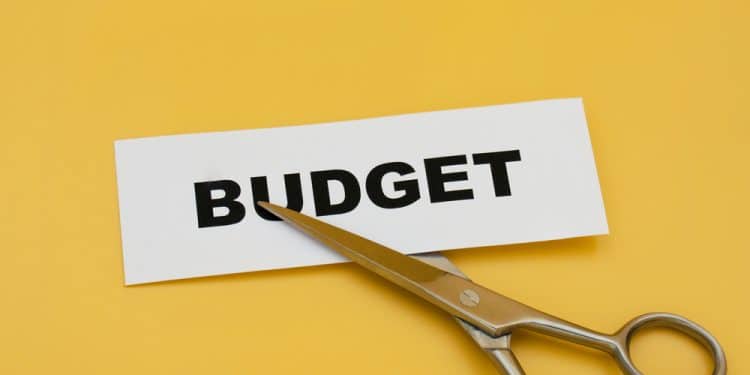Breaking Free from Traditional Budgeting
Raise your hand if you’ve ever tried creating a budget, only to abandon it after a few weeks. Maybe you downloaded a fancy budgeting app, categorized your expenses, and set limits, but before you knew it, things got messy. You forgot to log a few purchases, a surprise expense threw everything off, and eventually, you gave up altogether.
Sound familiar? If traditional budgeting hasn’t worked for you, you’re not alone. And that’s exactly why the no-budget budget exists.
The no-budget budget is an approach that ditches spreadsheets, expense tracking, and restrictive spending categories. Instead, it simplifies money management so that you can build financial stability without constantly micromanaging every dollar. Some call it lazy budgeting, but in reality, it’s about creating a system where you don’t have to stress over every expense.
Intrigued? Let’s dive into how the no-budget budget works—and why it might be the key to financial freedom you’ve been looking for.
Why Traditional Budgets Fail for So Many People
Before we get into the no-budget budget, let’s talk about why traditional budgets often don’t work.
- They’re Time-Consuming – Keeping up with expense tracking, categorizing purchases, and adjusting spending limits every month takes effort. Life is busy, and budgeting often gets pushed aside.
- They Feel Too Restrictive – Most budgets operate with strict spending caps, which can feel suffocating. One mistake, and you feel like you’ve failed.
- They Ignore Irregular Expenses – Budgeting a fixed amount for groceries or entertainment works—until an unexpected bill or social event throws everything off.
- They Can Lead to Guilt and Frustration – If you overspend in one category, you might feel guilty and abandon the budget altogether.
- They Require Too Much Willpower – Constantly deciding between sticking to the budget and making real-life choices can be exhausting.
For many, a traditional budget feels like too much effort for too little reward. And that’s why the no-budget budget is a game-changer.
What is the No-Budget Budget?
The no-budget budget is a way to manage your money without obsessing over categories, tracking every expense, or manually restricting yourself.
Instead of setting strict spending limits, the focus is on big-picture financial habits that allow you to live within your means—without needing a detailed budget.
At its core, the no-budget budget follows three simple rules:
✔ Automate Your Essentials – Ensure bills, savings, and debt payments happen first.
✔ Spend What’s Left—Guilt-Free – Once the important stuff is covered, you can spend the rest freely.
✔ Adjust When Needed – If something unexpected comes up, tweak your plan without stress.
This method isn’t about tracking every penny. It’s about setting up your finances so that good financial decisions happen automatically.
How the No-Budget Budget Works in Real Life
So, how do you actually implement the no-budget budget? Here’s a breakdown:
Step 1: Pay Yourself First
Before spending on anything else, cover your essentials. This includes:
- Rent/mortgage
- Utilities
- Insurance
- Debt payments
- Retirement contributions
- Emergency fund savings
If these are automated, you never have to worry about missing a bill or falling behind on savings.
Financial coach Chris Browning says, “If you prioritize the essentials first, you don’t have to track every dollar afterward—you’re already covered.”
By automating these expenses, you remove the stress of remembering due dates or deciding how much to save each month.
Step 2: Use the “Set It and Forget It” Approach
One of the biggest benefits of the no-budget budget is that you don’t have to manually move money around. Instead, you set up automatic transfers:
✔ Savings go directly into a separate account before you even see the money.
✔ Bills are paid automatically so there’s no risk of overspending before they’re covered.
✔ Debt payments happen on autopilot so you’re always making progress.
Once these essentials are taken care of, you’re free to spend whatever is left. No guilt, no tracking, no stress.
Step 3: Keep an Eye on Your Bank Balance—Not Every Purchase
Instead of checking budget categories, simply monitor your account balance throughout the month.
If you’re running low before your next paycheck, you’ll naturally cut back on spending. If you have extra, you can use it however you want.
A personal finance expert on Twitter, @BudgetSavvy, explains it best: “The no-budget budget works because it forces you to think about money in big-picture terms. As long as you’re not overspending your account balance, you’re in control.”
This method naturally encourages mindful spending without needing a detailed breakdown of where your money is going.
Who Should Use It?
The no-budget budget isn’t for everyone. If you need strict discipline or are aggressively saving for a big goal, a traditional budget might work better.
However, this approach is perfect for:
✔ People who hate budgeting and find it too complicated.
✔ Those with consistent incomes who can automate their fixed expenses.
✔ Anyone who struggles with traditional budgeting methods but still wants financial stability.
If you’re tired of tracking every transaction and just want an easier way to manage money, the no-budget budget could be the solution you’ve been searching for.

Common Myths
Some people assume the no-budget budget means being financially careless, but that’s not true. Let’s clear up a few misconceptions:
❌ Myth 1: “You won’t know where your money is going.”
✅ Reality: You’ll still have a general idea—just without the stress of tracking every single expense.
❌ Myth 2: “You’ll overspend because there’s no structure.”
✅ Reality: Automating your essentials ensures that spending stays within your means.
❌ Myth 3: “It’s not as effective as traditional budgeting.”
✅ Reality: Many people save more money using the no-budget budget because it simplifies their financial system and removes friction.
Is the No-Budget Budget Right for You?
The no-budget budget offers a simple, stress-free alternative to traditional budgeting. Instead of tracking every expense, this method focuses on prioritizing your essentials, automating financial decisions, and spending what’s left guilt-free.
For those who struggle with traditional budgeting, this approach can be a game-changer—helping you gain financial freedom without feeling overwhelmed.
If detailed spreadsheets and budget apps haven’t worked for you, it’s time to try something new. Set up your no-budget budget today and see how simplifying your finances can lead to better financial control and peace of mind.
